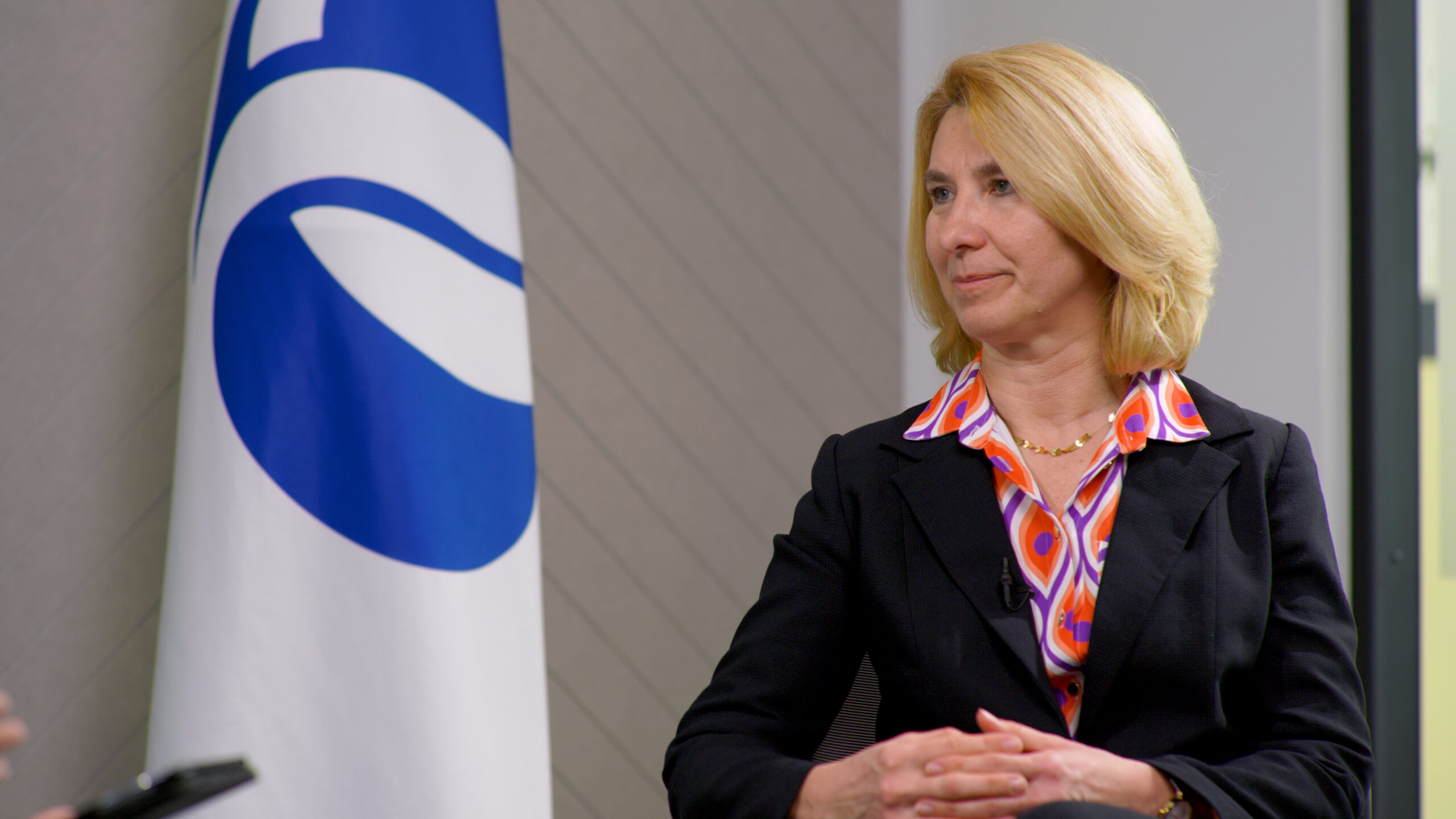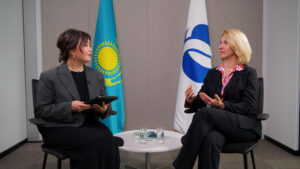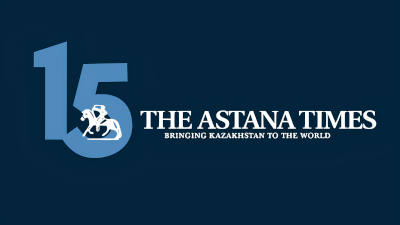ASTANA – Economic growth in Central Asia is projected to reach 5.7% in 2025 before easing to 5.2% in 2026. The outlook comes despite a global subdued growth, driven by persistent inflation, weak reforms momentum, and weakening external demand, according to the European Bank for Reconstruction and Development (EBRD)’s latest Regional Economic Prospects report. Beata Javorcik, the bank’s chief economist, unpacks the findings in an interview with The Astana Times.

Beata Javorcik visited Kazakhstan in early March. Photo credit: The Astana Times
The report notes that Central Asia’s growth slowed from 5.7% in 2023 to an estimated 5.4% in 2024, as Kazakhstan’s mining output stalled and Mongolia was struck by severe weather.
“So far, the region has done quite well. Last year, Central Asia grew as fast as all the EBRD countries on average. This year, we are expecting Central Asia to grow faster than China,” said Javorcik, during an interview at the EBRD’s office in Astana.
Average growth in the EBRD’s economies slowed from 3.4% in 2022 to 2.7% in both 2023 and 2024. This year’s projection was revised to 3.2%, down by 0.3 percentage points relative to the bank’s September 2024 forecast.
“Of course, we would like to see people of Central Asia enjoying the standards of living comparable to our best-performing countries such as Poland or the Czech Republic. And of course, diversification of the economy remains one of the challenges that yet need to be addressed,” she added.
In contrast, growth in Central Europe and the Baltic states reached an estimated 2% in 2024 and is projected to increase to 2.7% in 2025 and 2.8% in 2026. South and Eastern European Union economies are set to grow by only 2.1%, hampered by a slowdown in investment and waning fiscal stimulus.
Weak external demand
According to Javorcik, weakening external demand is a common challenge for EBRD’s economies.
“What we have seen across our countries of operation is weak external demand, so contributions to growth have been primarily coming from within the countries,” she said. “In Central Asia, we have noted a particularly fast growth rate of real wages. They increased faster than what was observed before the pandemic. Of course, that has fueled private consumption. Government spending and public investment have also contributed to growth. In some countries in the region, remittances played an important role, as the tourism.”
Risks moving forward

Assel Satubaldina and Beata Javorcik during their conversation in the EBRD office in Astana. Photo credit: The Astana Times
According to Javorcik, slower growth in China could weigh on the region’s outlook, while heavy dependence on commodity exports leaves it exposed to price shocks. Despite the risks, the chief economist underscored some reasons for optimism.
“Globally, we are seeing reconfiguration of flows of foreign direct investment [FDI]. Countries that have seen an increase in the number of greenfield projects – meaning projects that involve building new facilities – these countries include the United Arab Emirates, Saudi Arabia, Egypt, but also Kazakhstan and Uzbekistan,” said Javorcik.
She noted a common thread across these countries is the pursuit of a multi-vector geopolitical strategy.
“They enjoy inflows of FDI from all regions of the world – from Western Europe, from China, from the U.S., as well as from the Middle East. These changes in geopolitics globally, this reconfiguration of global flows of investment and trade is something that could actually benefit this region,” she said.
Outlook for Kazakhstan
The report states that economic growth remained strong in Kazakhstan in 2024, driven by solid performance in the non-oil sectors. Consumer spending was boosted by historically low unemployment and rising real wages, while investment activity continued to expand, but at a more moderate pace than the previous year.
On the production side, agriculture, construction, trade and transport observed the highest growth rates. The mining and quarrying sector posted a slight decline due to oil output reduction.
EBRD’s report projects the Kazakh economy to accelerate to 5.2% in 2025, driven by the planned expansion of the Tengiz oil field. It will, however, moderate to 4.5% in 2026.
“Looking from a long-term perspective, of course, the biggest risk for a country like Kazakhstan is its reliance on hydrocarbon exports as the world is shifting away from carbon-based growth,” Javorcik said.
She noted that Kazakhstan saw an increase in the number of greenfield projects last year. While much of the investment value remained concentrated in extractive industries like mining, a significant number of projects targeted other sectors — including food and beverages, logistics, financial services, and business support. “That bodes well for the possible future diversification of the economy,” she added.
Javorcik reaffirmed EBRD’s commitment to support the development of the Kazakh economy and “making it more competitive.”
“We are proud to say that last year was a record year in terms of our investments here. We invested more than 900 million euros [US$970 million] in a range of projects,” she said.
Diversification is still a big challenge
Javorcik emphasized diversification has remained a long-standing challenge for resource-rich economies. In the last few decades, it has become more difficult for countries to grow relying solely on goods exports.
“Because globally, China is a very competitive producer. It’s very hard for countries to become competitive on the world stage if they don’t have a sort of long history of industrial production,” she added.
In this context, the export of services is what Javorcik describes as a “bright spot,” particularly in areas such as IT and computer services.
“These exports, in particular, of computer services, have been quite high in countries ranging from Ukraine and Serbia to Central Europe. What these countries have in common is a high educational attainment, much higher than the average educational attainment in emerging markets,” she said.
According to her, Central Asia shares similarly strong education indicators but has yet to tap into this potential.
“So this is untapped potential that the region has,” she added.
Kazakhstan set an ambitious goal to bring its IT services exports to $1 billion by 2026. “If the experience of other countries can provide the lessons, indeed, it is possible to do that,” she added.
The competition, however, is intense, as companies and clients buying computer services are highly cost-sensitive. Competitiveness will also increasingly be hinged on sustainability.
“More and more companies are looking at their carbon footprint, including so-called Scope 3 emissions, that is, emissions that are embodied in the purchases of goods and services. Therefore, countries that are able to show that their computer services and exports are based on clean energy can actually have an edge in this race,” said Javorcik.
Stay tuned to The Astana Times YouTube channel for a full interview with Prof. Javorcik coming next week.


